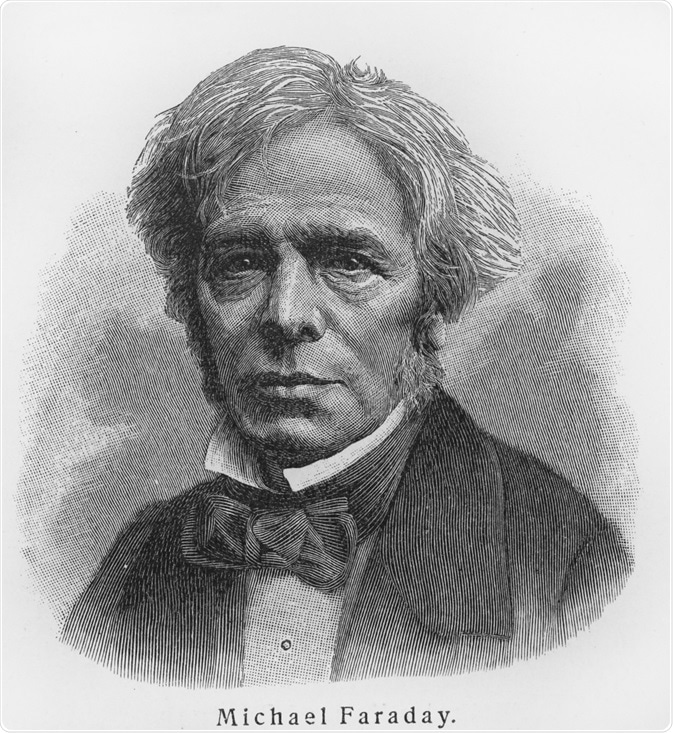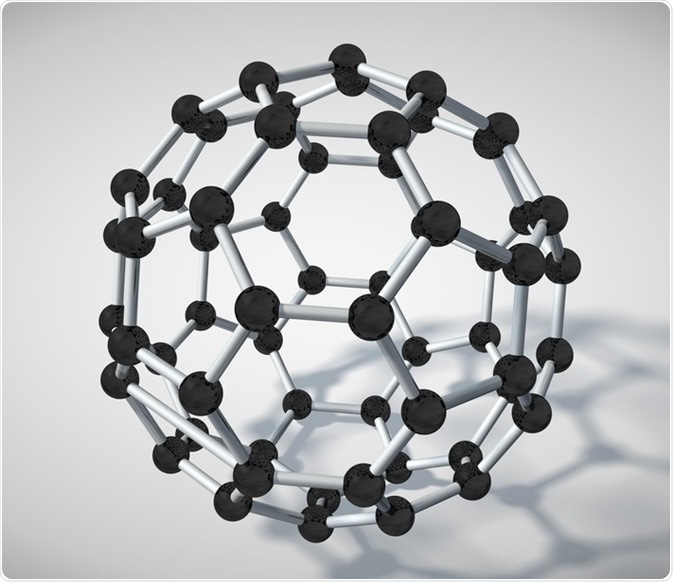
 Early work in nanoscience throughout the 19th century was conducted by Scottish scientist James Clerk Maxwell, who is largely remembered for his work on electromagnetism. This work necessitated an understanding of how matter and light behave at the nanoscale, and helped to create Maxwell’s equations.
Early work in nanoscience throughout the 19th century was conducted by Scottish scientist James Clerk Maxwell, who is largely remembered for his work on electromagnetism. This work necessitated an understanding of how matter and light behave at the nanoscale, and helped to create Maxwell’s equations.
English scientist John William Strutt, third Baron Rayleigh, also spent some time researching the formation of thin monolayer films created by oil on the surface of water: an early investigation into nanoscale properties.
Inorganic Nanoparticles
 English scientist performed a great deal of research in the field of electromagnetism during the 18th century; now considered the fields of physics and chemistry. He was the first to successfully describe metallic nanoparticles, in particular those made from gold, and found that the optical properties of gold nanoparticles differ significantly from that of bulk solid gold.
English scientist performed a great deal of research in the field of electromagnetism during the 18th century; now considered the fields of physics and chemistry. He was the first to successfully describe metallic nanoparticles, in particular those made from gold, and found that the optical properties of gold nanoparticles differ significantly from that of bulk solid gold.
Faraday discovered this when studying the optical properties of a thin gold leaf. He developed colloidal gold, liquid-containing stable gold nanoparticles, following which he applied thin films of gold to glass slides. Faraday noticed that light passed through these colloids was well defined due to light scattering by the gold nanoparticles themselves. This is known as the Faraday-Tyndall effect, though this is often shortened to just the Tyndall effect, as Irish scientist John Tyndall also experimented with light and colloids at around the same time.
Organic Nanoparticles
English chemist Harry Kroto earned the Nobel prize in 1996 for the discovery of fullerenes, and he shared the award with American scientists Robert Curl and Richard Smalley. Fullerenes are molecules made up entirely of carbon in a specific structure that allows them to take the shape of a spherical ball or tubes.
Spherical fullerene structures, also known as Buckyballs, are generally made up of a number of carbons connected together in a combination of hexagonal and pentagonal arrangements.
Graphene is technically a type of fullerene, though specifically only consists of hexagonal carbon arrangements that do not allow the creation of a spherical structure, though sheets, tubes, and several other arrangements have been achieved.
Graphene was discovered and characterized at Manchester University, UK, in 2004 by British-Dutch scientist Professor Sir Andre Geim and Professor Sir Kostya Novoselov, who both received the Nobel prize in Physics in 2010 for this work. They pioneered the ‘scotch tape method’ of creating layers of graphene, which works simply by applying tape of a block of graphite and then peeling it off, which leaves a naturally ordered layer of carbon atoms on the tape.
 Angel Soler Gollonet | Shutterstock
Angel Soler Gollonet | Shutterstock
Birth of Nanotechnology
Metallic nanoparticles have been used since at least Roman times to create novelty coloured glass, the earliest example we have is the Roman Lycurgus cup, currently located at the British Museum, London, UK. Later, gold and silver nanoparticles were incorporated into stained glass windows throughout medieval times in Europe.
The first popularizing discussion on nanotechnology was given by American scientist Richard Feynman in 1959, where the future potential of nanoscale manipulation was highlighted to the scientific community. The actual term ‘Nanotechnology’ was coined by Japanese scientist Norio Taniguchi in a paper published in 1974.
Source
- History of Nanotechnology.
- Nanodevices: Maxwell's demon on a chip.
- Michael Faraday's gold colloids.
- John Tyndall (1820-1893).
- Graphene and Fullerenes.
- The history of graphene.
Further Reading
- All Nanoscience Content
- Characterization of Nanoparticles
- What are Nanomicelles?
- Applications of Nanomicelles
- Applying Nanomechanics to Biology
Last Updated: Mar 12, 2019

Written by
Michael Greenwood
Michael graduated from Manchester Metropolitan University with a B.Sc. in Chemistry in 2014, where he majored in organic, inorganic, physical and analytical chemistry. He is currently completing a Ph.D. on the design and production of gold nanoparticles able to act as multimodal anticancer agents, being both drug delivery platforms and radiation dose enhancers.
Source: Read Full Article